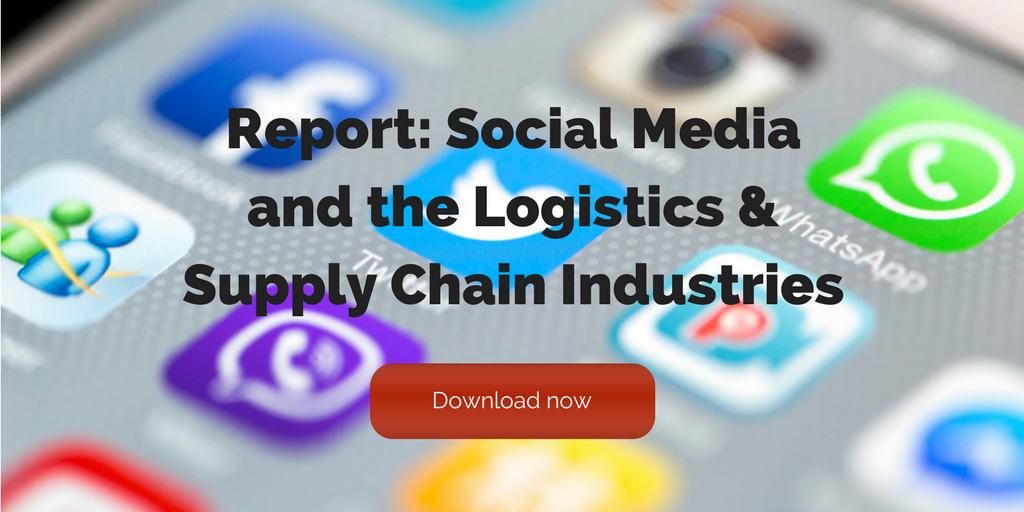
by Fronetics | Mar 9, 2016 | Blog, Content Marketing, Marketing

The other day a client called to express his frustration with content marketing. Not only was he disappointed with the number of leads that his company had obtained to date, he was also disappointed with the number of sales. He was ready to call it quits and pull the plug on all content marketing efforts.
This client was not the first to call and express frustration, nor will he be the last. Unfortunately, there is a misconception that as soon as a company incorporates a content marketing into their strategy, they will be flooded with leads — leads served on a silver platter and leads all boxed up and tied with a bow. I wish content marketing could do this — it can’t. That being said, walking away from content marketing is a big mistake — content marketing is an effective strategy that companies should employ.
The buying process for B2B buyers has become more complex and longer. The 2015 B2B Buyer’s Survey Report found that 53% of respondents reported their purchase cycle was longer than it was the previous year. The buying process has gotten longer because the majority of buyers (82%) are using more sources to research and evaluate products and services, and they are spending more time in the research phase itself. A full 80% of respondents reported they spend more time on research alone — this is up from 58% in the previous survey.
Social media and vendor-focused content are two key places where buyers turn to conduct research. More than half (53%) of survey respondents reported that social media plays in their research process, and 86% of respondents reported that content such as case studies and product data sheets influence purchase decisions.
The increased focus on research has changed when the buyers engage with a sales rep. Today, the average buyer progresses nearly 60% of the way through the purchase decision-making process before engaging with a sales rep.
Back to my client. I walked my client through these facts, and then we walked through the metrics we track on the monthly basis. Since my client had started using content marketing, traffic to his company’s website had increased significantly, visitors to the website were spending longer on it than they had before, and they were looking at more pages. Additionally the company’s social reach had grown and engagement — with customers, prospects, and others within the industry — had increased considerably. All of these things, I pointed out, were positive. I then reminded my client that the typical sales cycle for his company and industry was 12-18 months — far longer than the few short months that he had been using content marketing.
I spent the next few minutes going over the company’s content marketing strategy. We decided to make a few tweaks, and then discussed both goals and expectations going forward.
It is important for companies to recognize that content marketing should be a part of their strategy — more than ever, B2B buyers are looking for information and are using that information to make buying decisions. Companies need to be using social media. Companies need to be creating and curating quality content. It is equally important, however, for companies to realize that content marketing is not magic. Content marketing doesn’t shorten the buying process; rather it changes it. Moreover, content marketing doesn’t deliver sales — sales people still play a large role in lead nurturing and closing deals.
You may also like:
This was originally published on Electronics Purchasing Strategies.

by Fronetics | Aug 6, 2015 | Blog, Logistics, Marketing, Social Media, Supply Chain, Transportation & Trucking

Transportation and logistics is a field that is booming. The business is a money-maker and a cornerstone of day-to-day functioning. It’s one that has been present for centuries. We are well past the Age of Discovery, but transportation and logistics companies carry on the torch of moving products that people need and desire around the world. One might wonder if the sultriness of the Silk Road and the Spice Trade has lost its allure and sexiness, but that needn’t be the case. Social media has brought about a fantastic opportunity for transportation and logistics companies to share their successes, display their offerings, create community, and convert leads.
Where to Start
First, think about it. Many transportation and logistics companies think about social media and how to use it, but cite a lack of time as a reason they haven’t explored the various platforms. Thinking about how social media can work for your logistics or transportation company is the first stop towards progress.
Second, learn about it. Understanding individual usage of social media versus B2B usage of social media is important. Do your consumers use LinkedIn, Facebook, Twitter? Where are your competitors finding success, and what platforms are they missing? Once you figure these things out the impulse will be to get started. Post away! Tweet away! Blog away! However, creating a Facebook page or a Twitter account will not draw in your community of employees or existing clients, and will not attract potential customers or clients. Having an account is great thing, but it’s not the most important thing. Knowing how to express your brand, what content to curate and create, and how frequently to share content is critical to social media success.
Learning is a process and takes time. Set up also takes time. Hiring an outside agency to do this work can both save you time, and will ultimately reap ROI. Marketing strategy companies have been doing this work already, and understand how to highlight your company. They know the market, and once they get to know you a bit better, you can work together to figure out how to express your brand through the platform of social media.
What to Highlight
Once you figure out who to focus on and how to reach that community, creating and curating your unique content is key. What is most informative and helpful to your clients? What will feel meaningful to them? What will catch and hold their attention? How do you want people to perceive you, your employees, and your products/services? Some studies have shown that conversion rates from social media can be 100% more effective than from outbound marketing, so getting this right could greatly benefit your company.
The joy of social media is its speed and its ability to humanize a company. A company’s Twitter feed is not like its white papers. Social media is known for personalizing things, so let people know the more human side of your business. Who are the drivers? Who are the employees? What are the success stories? Celebrate your community, partners, and clients. This is a place to engage with other businesses – to educate them and learn from them.
One perfect example of a logistics company that thrives in this arena is UPS. The logistics company has found success with unique, fun, interesting, frequent posts, tweets, and blogs. They also highlight their “heroes” by telling stories, often through video, of their heroic drivers who have been known to save lives. They show the human side of delivery. They connect. And when it comes to social media, it’s all about connection.
Two other examples of companies that excel in this area are Sourcemap and Transfix. Both companies have leveraged social media as a platform for growth. Sourcemap’s founder and CEO Leonardo Bonanni credits social media for the success for his business: “Sourcemap wouldn’t be here without social media.” For Transfix, social media and digital technologies enables the company to make the trucking industry more efficient and user-friendly.
Fronetics Strategic Advisors is a leading management consulting firm. Our firm works with companies to identify and execute strategies for growth and value creation.
When it comes to marketing we work with our clients to create and execute strategies that drive success and elevate their brand position within the industry. Unlike other firms, we align marketing programs with business objectives and, through a data driven approach, are able to deliver results with a targeted ROI. Our team is comprised of strategists, marketing professionals, writers, designers, and experts in social media. Together we leverage our experience to increase brand awareness, position our clients as thought leaders, drive meaningful engagement with prospects and customers, and help businesses grow.



by Fronetics | Oct 30, 2014 | Blog, Marketing, Social Media, Strategy, Supply Chain

The use of third-party logistics providers are on the rise. As many as nine out of ten 3PLs surveyed by Inbound Logistics reported their client base grew by 5 percent this year, continuing the unabated expansion of recent years.
And there’s good reason for it.
In an interesting article on SupplyChain 24/7, Adam Robinson, the marketing guru at Cerasis, lists seven reasons companies should outsource non-core transportation management functions to 3PL providers. Surprisingly, perhaps, many of the same arguments can be applied to companies debating who should be in charge of their content creation.
As the number one reason to outsource, Robinson cites “Time and Money.”
He writes:
“3PL providers are able to reduce the amount of infrastructure investments in equipment, software, facilities and personnel… These 3PLs are like having non-paid employees on your staff and allow shippers to focus resources on areas where they are the expert (i.e. manufacturing, product sales).”
Time and money – or lack thereof – are similarly common issues among companies with respect to social media. In a new Fronetics report on social media use in the supply chain and logistics industries, nearly half of the respondents cited time and budgetary constraints as their top two challenges. Such companies may, as a result, participate only sporadically or not at all.
Since consistency is crucial to online lead generation, anything but a fulltime commitment to the company blog, content curation, and social media outreach is doomed to fail. An outside provider can, just like a 3PL, take these tasks off your hands, allowing you to focus on your core competencies.
Robinson also argues:
“As shippers rely on 3PL partners to provide more strategic oversight, and help catalyze business process change within the organization, the relationship is growing more fluid, and less analytical. Service providers are becoming an extension of the enterprise.”
In short, 3PL providers should not be perceived as outsiders but as partners who know their stuff. They contract with thousands of carriers and know the fastest and most reliable routes to move product from point A to point B.
A marketing company, especially one specialized in content creation for the logistics, transportation and supply chain industries, works the same way, drawing on a wealth of industry knowledge. In essence, you hire experts equipped with the right strategic tools to leverage their market expertise to your advantage.
Finally, Robinson writes visibility of loads gives 3PLs a leg up on the competition:
“Many 3PLs are able to integrate tracking into shipper IT systems, provide integration into ERP and WMS automated notices or even real-time delivery notifications by e-mail.”
Losing track of a shipment equals chaos. 3PL providers are there to ensure it never happens. In the same vein, companies need to track the metrics of their content strategy or risk wasting resources on something that yields no results. They need to know which social media outlets work for their business and what types of content draw traffic to their site. It takes time and resources – and as our survey revealed, both tend to be in short supply.
Your content marketing partner, on the other hand, knows metrics is as important as a shipment is to a 3PL provider.
Outsourcing content creation may be your strategic advantage over your competition.

by Fronetics | Oct 30, 2014 | Blog, Marketing, Social Media, Strategy, Supply Chain

The use of third-party logistics providers are on the rise. As many as nine out of ten 3PLs surveyed by Inbound Logistics reported their client base grew by 5 percent this year, continuing the unabated expansion of recent years.
And there’s good reason for it.
In an interesting article on SupplyChain 24/7, Adam Robinson, the marketing guru at Cerasis, lists seven reasons companies should outsource non-core transportation management functions to 3PL providers. Surprisingly, perhaps, many of the same arguments can be applied to companies debating who should be in charge of their content creation.
As the number one reason to outsource, Robinson cites “Time and Money.”
He writes:
“3PL providers are able to reduce the amount of infrastructure investments in equipment, software, facilities and personnel… These 3PLs are like having non-paid employees on your staff and allow shippers to focus resources on areas where they are the expert (i.e. manufacturing, product sales).”
Time and money – or lack thereof – are similarly common issues among companies with respect to social media. In a new Fronetics report on social media use in the supply chain and logistics industries, nearly half of the respondents cited time and budgetary constraints as their top two challenges. Such companies may, as a result, participate only sporadically or not at all.
Since consistency is crucial to online lead generation, anything but a fulltime commitment to the company blog, content curation, and social media outreach is doomed to fail. An outside provider can, just like a 3PL, take these tasks off your hands, allowing you to focus on your core competencies.
Robinson also argues:
“As shippers rely on 3PL partners to provide more strategic oversight, and help catalyze business process change within the organization, the relationship is growing more fluid, and less analytical. Service providers are becoming an extension of the enterprise.”
In short, 3PL providers should not be perceived as outsiders but as partners who know their stuff. They contract with thousands of carriers and know the fastest and most reliable routes to move product from point A to point B.
A marketing company, especially one specialized in content creation for the logistics, transportation and supply chain industries, works the same way, drawing on a wealth of industry knowledge. In essence, you hire experts equipped with the right strategic tools to leverage their market expertise to your advantage.
Finally, Robinson writes visibility of loads gives 3PLs a leg up on the competition:
“Many 3PLs are able to integrate tracking into shipper IT systems, provide integration into ERP and WMS automated notices or even real-time delivery notifications by e-mail.”
Losing track of a shipment equals chaos. 3PL providers are there to ensure it never happens. In the same vein, companies need to track the metrics of their content strategy or risk wasting resources on something that yields no results. They need to know which social media outlets work for their business and what types of content draw traffic to their site. It takes time and resources – and as our survey revealed, both tend to be in short supply.
Your content marketing partner, on the other hand, knows metrics is as important as a shipment is to a 3PL provider.
Outsourcing content creation may be your strategic advantage over your competition.

by Fronetics | Jan 29, 2014 | Blog, Marketing, Social Media

There is much more than meets the eye when it comes to social media marketing. From expanding corporate communications to learning valuable information about consumers, social media has benefits that help businesses grow and expand their reach. Here are four powerful reasons why your business needs to incorporate social media into your marketing strategy:
1. Sharing Educational Content with Consumers
Leveraging social media as a tool for educating customers is a B2B marketing strategy that many businesses miss out on. Build your social media channels and develop thought leadership by providing objective, educational content that is relevant to your customers’ business problems. Become a resource of industry-related information through your original content and content curated from across the Internet. When potential customers are beginning their buying process, they gravitate towards companies with whom they are familiar and perceive as industry experts. According to Sirius Decisions, 70% of the buyer’s journey is complete before they ever contact a sales representative. Socially sharing educational content will increase your visibility to buyers during the sales process. Buyers are more informed than ever before, and businesses need to strive to be a resource for their customers on social media.
2. Improve Your SEO Ranking
Inbound links and social shares are two key performance indicators (KPIs) to be mindful of throughout the SEO process. Inbound links and social shares are two increasingly important factors that are taken into consideration during website indexes. These increase what Google refers to as Author Authority, and the more authority, the more SEO weight your website gains. Bottom line: the stronger your presence on social media, the higher your search engine page rank will be.
3. Generate New Leads
Social media can be used to help businesses build robust marketing campaigns to support lead generation, often with little to no cost. The plethora of social media networks and websites can seem overwhelming, but popular networks like LinkedIn and Twitter are a great place to start using social media to generate qualified leads.
LinkedIn is an ideal space for businesses; the community of professionals is a great resource for networking. LinkedIn supports businesses with community pages, company pages, groups and discussion boards for users to share ideas, content and talk to like-minded professionals. LinkedIn is also a useful tool for leads by gauging interest in products and services based on conversations. Additionally, Twitter is another free platform that users can use to drive lead generation efforts. According to Inside View, B2B marketers who use Twitter generate twice as many leads as those that do not.
4. Stretch Your Marketing Dollars
Even if you do chose to upgrade your social media toolkit and pay for premium benefits and services, the cost of implementing a social media marketing campaign is significantly lower than using many traditional mediums. The real-time data and analytics received through different social platforms provide users with valuable insights and the opportunity for businesses to pivot campaigns and tactics as needed in order to have the highest possible impact. Moreover, you be flexible with your marketing strategies, campaigns and tactics.
What have been some of the biggest benefits that your organization has seen as a result of their social media practices?
For more information on the benefits of social media, check out our white paper.






